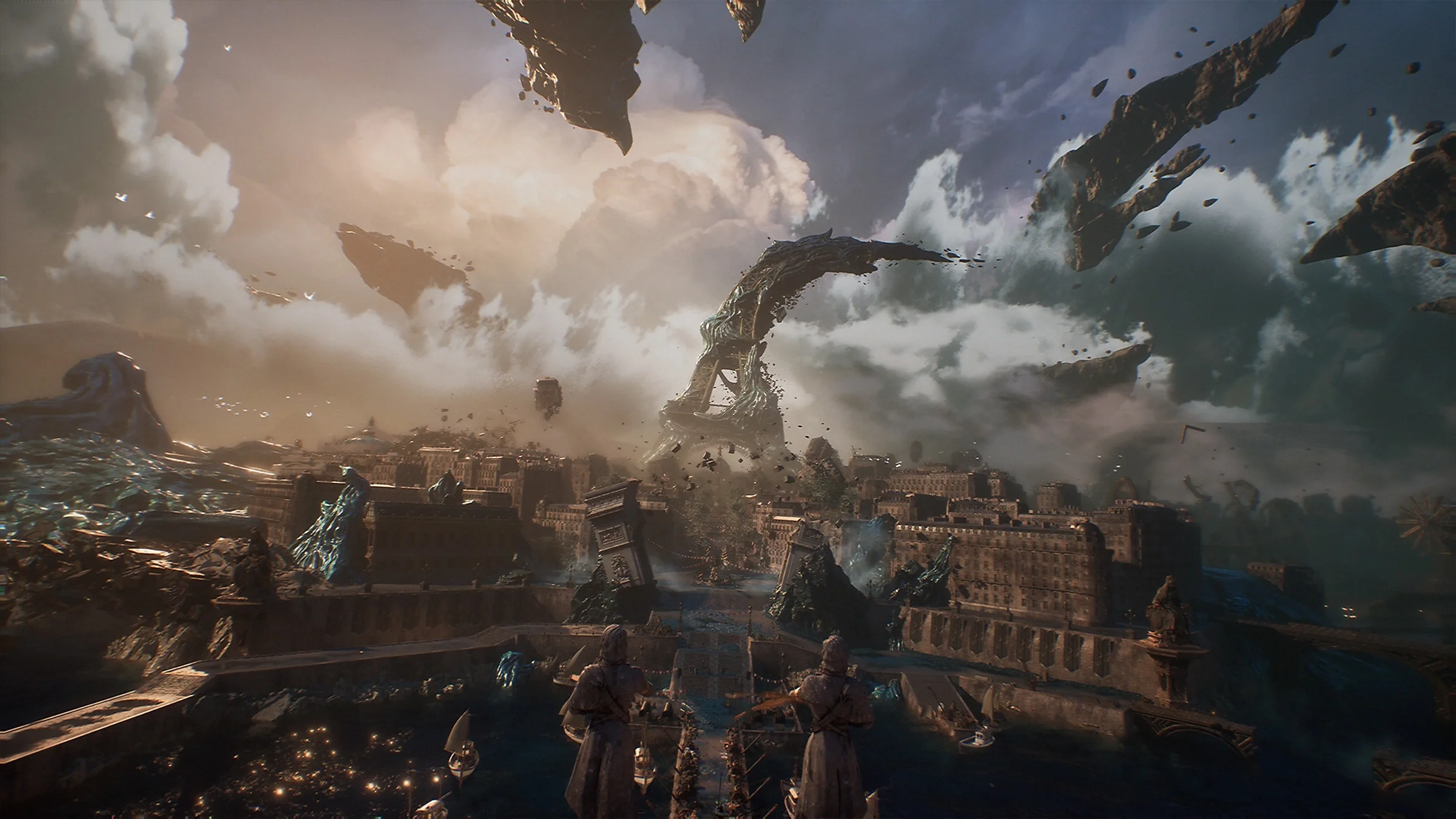Clair Obscur Review
Sandfall Delivers Nostalgia with a Twist in its Ambitious Debut
After the video game industry's 2020 pandemic boom and the massive layoffs that followed, the state of the AAA market is more risk averse than ever.
Today layoffs continue, and the mainstream industry's output is homogenizing. Growing budgets and the demand for profit push a shrinking pool of developers to conform to industry-wide trends in an effort to minimize financial risk. For people like me who possess an affinity for high-fidelity graphics and deep, challenging gameplay that strives for more than a rehash of the same three proven models, it often feels like there is little hope left in the world of video games. But worry not, dear reader, industry newcomer Sandfall has erupted onto the scene with its massively ambitious debut title, Clair Obscur: Expedition 33.
Developed by a small core team of roughly 30 developers led by former Ubisoft employee and professional French guy Guillaume Broche, Clair Obscur: Expedition 33 is an ambitious take on the classic JRPG format in an industry that has widely rejected it. Few games in recent memory showcase the same level of competence and vision as Sandfall's first effort. It stands not only as a testament to the power of Epic Games' Unreal Engine—proving what small, relatively inexperienced teams can achieve, but also as a direct rebuke to the AAA industry's prevailing trends. Sandfall pays homage to the mechanics and the storytelling style of classic, high fidelity Japanese role-playing games, a format largely abandoned by major studios, including Square Enix, which once popularized the genre with its flagship Final Fantasy series.
To label Clair Obscur as a mere throwback would be a misrepresentation of its ambition. Sandfall combines a turn-based combat system with passive modifiers in the style of Final Fantasy IX along with modern mechanics like dodging and parrying to mitigate damage or unleash devastating counterattacks. Like FromSoftware's controller-smashing classic Sekiro: Shadows Die Twice, the ability to chip away at enemies through skillful defensive play provides a steady stream of dopamine between strategic and beautifully animated offensive maneuvers. Combined with deep, flexible character customization systems that emphasize synergy and risk-reward mechanics, Expedition 33's gameplay forms a whole greater than the sum of its parts.
Beyond its addictive gameplay loop, Clair Obscur boasts a narrative that outclasses most in the medium. The narrative Sandfall has delivered here is not only a shining example of what video game storytelling can achieve, but also what I found to be a profound and existential meditation on grief and what art can mean to the creators who lose themselves in it. All of this is delivered with a level of grace and effortlessness that makes it hard to believe the studio found their lead writer on Reddit.
Here's the premise: In a fantastical Belle Epoque-inspired realm, the city Lumière and its inhabitants face an extinction-level crisis in the form of The Gommage—an annual event in which the towering, godlike figure on the horizon known only as The Paintress rises and scrawls onto a massive monolith a number one lower than the previous year. Immediately, every citizen of Lumière older than that number disintegrates, vanishing into dust and flower petals carried away by the ocean breeze. Each year, following The Gommage, a dwindling team of volunteers known as the Expedition set out on a journey to slay The Paintress and end the cycle. Players take on the role of this year's group: Expedition 33 (named for the current glowing number atop the monolith). With a bold, empathetic roster of heroes and villains and enough twists and turns to make Bioshock progenitor Ken Levine blush, "Clair Obscur" delivers a moving, thought-provoking experience that leaves players devastated and craving more.
That is not to say, though, that the game is not without its missteps. Frustrating, under-designed minigames and platforming challenges haunt the periphery of the experience. It's hard to say whether these sections are an attempt to pay homage to similar design intrusions in classic JRPGs (like blitzball in FFX or all of Kingdom Hearts), or the developer making a joke at the player's expense. Luckily, most of these blemishes are easily ignored by all but the most dedicated of completionists and swimsuit-skin-collecting enthusiasts.
In addition to its ambitious story and engaging gameplay, the game is a masterclass in presentation. During my first playthrough, I constantly encountered awe-inspiring character, environment and enemy designs—creepy and tragic in equal measure. At times, the quality of the visual storytelling borders on unimpeachable. This combined with the tear jerking compositions of industry newcomer Lorien Testard (discovered by Broche on an obscure music forum), creates an aesthetic experience that both honors and subverts the look and feel of classic JRPGs.
As a lifelong gamer, it's hard not to feel that the industry has devolved into a heartless machine that pumps out increasingly forgettable titles. But games like Clair Obscur: Expedition 33 remind me what it felt like to play Final Fantasy X or BioShock as a kid and what it is to become completely immersed in something made with love and genuine passion. If you're a fan of JRPGs, the recent output of FromSoftware or simply a believer in video games as a storytelling medium, you owe it to yourself to give this one a try.
